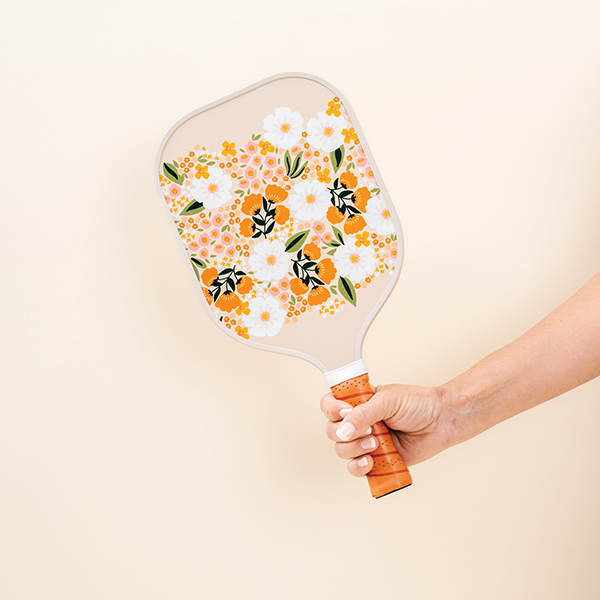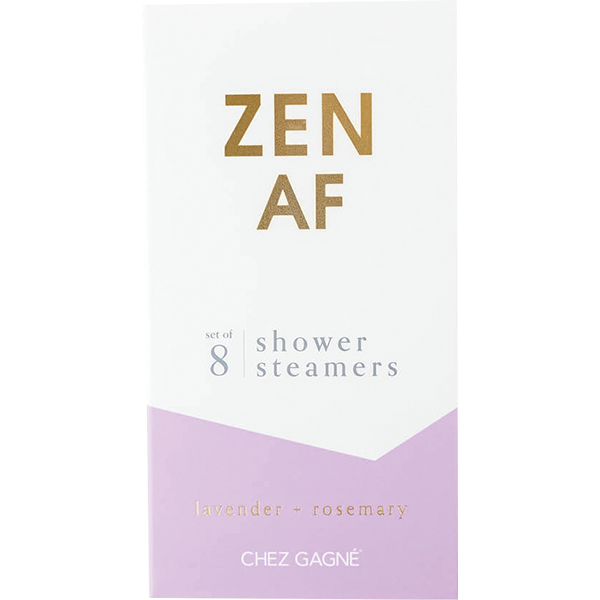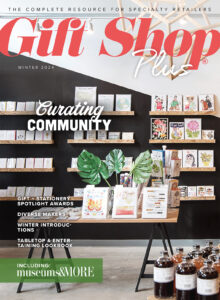Sea Green
Coastal to Make Waves in Atlanta
Americasmart, in Atlanta, is set to capture the coastal craze with the launch in January of its new Coastal Lifestyles Collection showroom. The nearly 6,000-square-foot showroom features furniture and decor with an intrinsically coastal flair, including painted indoor/outdoor furniture and furnishings, wall art, tabletop, area rugs, whimsical accessories and much more. Exhibitors include Design Legacy, Chaba Decor, Nantucket Window and Coast Lamps.
Amy Schlick, director of sales at Americasmart, says the company found a wide variety of products with coastal themes and decided to bring the different possibilities to a cross-section of retailers in one place. While many boomers are investing in vacation homes, Schlick says the trend is about more than just decorating secondary residences. "It's about embracing that whole feeling of a coastal lifestyle," she says.
Coastal Craze
Be it distressed buoys, porcelain vases imprinted with tree coral, or simply pieces of colored sea glass displayed in a vase, the coastal craze is showing up everywhere and on everything. This trend is about more than just home decor; it’s decor that delivers tranquility.
“Vacation homes have always been decorated in beach decor, but now people are bringing it into their primary residence. People want their home[s] to be more like an escape,” says Kay Fuston, editor in chief of Coastal Living, a national lifestyle magazine in Birmingham, AL.
“Today’s society is so filled with going nonstop from morning until night with phone calls, e-mails and traffic, people look for an opportunity to find a moment to relax,” says Carla Meehan, marketing coordinator for burton + BURTON, in Bogart, GA, a company that offers a wide range of coastal products including tabletop, gifts and decor. “And in a day and age when people are stretched so thin, even little things, such as a vacation picture in a coordinating, coastal-designed frame, can provide a little escape from the rat race.”
To accomplish the home-as-retreat effect, many products for today’s homeowners feature nautical, ocean and coastal-inspired motifs and designs.
“Open any magazine, and chances are you will see an interior that embraces this design scheme, either full-out or in subtle hints through selected accessories or color,” says Philip DeChiara, national visual director for Pacific Rim Import Corp., in Seattle. DeChiara is also on the company’s product development team.
“With the influence of HGTV (Home & Garden Television), and the growing awareness of the influence of our environment on our physical and emotional well-being, individuals are taking a greater interest in their home decor,” says Beverly Stadler, a certified interior designer and member of the American Society of Interior Designers. Stadler is president of Design Focus, an interior design company in San Clemente, CA.
Sales figures for coastal products fall under the category of home decor. In a report titled, “Home Furnishings: A Global Outlook,” Global Industry Analysts Inc., a San Jose, CA-based research firm, estimated that the “semi-durable house furnishings” segment occupied 33.2 percent of the overall home furnishings market in 2005. The report set the value of the world home furnishings industry at $115 billion.
Who’s riding the wave?
Just who’s scooping up coastal home decor goodies, you ask? One group is credited time and again: baby boomers. Baby boomers number more than 78.2 million these days, according to the U.S. Census Bureau (2005). “The general opinion is that baby boomers, with their increased wealth, are investing in vacation homes,” says Jaclyn C. Hirschhaut, vice president of public relations and marketing for the American Home Furnishings Alliance in High Point, NC.
That sounds exactly like the description that retailer Jane Sweringen gives of her customers. Sweringen is owner of Nautical Brass in Ilwaco, WA, a small port that is popular for fishing and boating. She says her customers are 40 to 60 years old, own more than one home and are retired or preparing to retire. She also says they are decorating both for their vacation homes and their primary residences.
In addition to boomers, there’s another group of coastal customers that you might not have expected: teenagers and 20-somethings. Doug Smith, owner of Dean Miller Surf Bedding in Santa Ana, CA, says that while his beach-inspired bedding and accessories sell well during the summer and the holidays, back-to-school is particularly strong. His sheets, pillows, lamps and clocks come in surfer-themed prints, like surfboards and Hawaiian flowers, good for college dormitories.
The customer base for coastal products is vast, and so are the products to serve these customers. “Coastal is penetrating every category. It’s in art, accent furniture and decorative accessories, like vases, candles and picture frames,” says Cinde W. Ingram, managing editor of Casual Living, a business-to-business magazine in Greensboro, NC.
Many companies offer numerous lines of coastal products. Pacific Rim, for example, has products broken down by various themes, including Beach Casual (items like shells, ceramic fish and bleached baskets), Modern Elegant (shells on pedestals and aqua art glass vases), Sea Side (seagulls and sailboats), Light Houses (lighthouse items with a brighter color scheme) and Tropical (stripes, ceramic flamingos and palm motifs).
Giftsprings, in Tampa, FL, sells approximately 120 coastal styles. For retailers, deciding what to stock can be challenging. Liz Hekimian-Williams, founder and owner of Giftsprings, offers some advice: “While there is room for innovation, folks just really also enjoy, appreciate and buy those typical coastal decor items, such as the sailboats and the ships in the bottles, so make sure you include those items, too.”
However, Fuston says unusual, higher-end pieces are selling well. “You can find kitschy coastal stuff all day long, but it’s the pieces that become centerpieces of the room that are important,” she says.
Ann I. Wingate, an interior designer in Jacksonville, FL, and a member of the American Society of Interior Designers, agrees. “I am seeing more serious items for the home . . . I’m seeing chandeliers in sea glass and crystal, lots of coral and coral-inspired items [and] seashells, as well. These may well be in silver-colored metals, resin, wood or ceramic, as well as printed fabrics. And good fabrics, too. High-end, high-style goods,” she says.
Bob White, owner of Wanderlust, Coastal Concepts for the Home in Cape May, NJ, says some of his more unusual items include carved wood hangings, such as a 5-foot-long whale and mermaids that retail from $300 to $600. And yes, people do buy them. 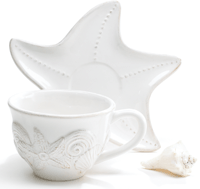
Another example: Dick Phillips, owner of Have A Seat, in Lake Worth, FL, sells Adirondack chairs made from vintage water skis. A picture of one of his chairs was featured in Coastal Living’s October issue. “I’ve been barraged with calls,” he says. “And people aren’t just buying this chair to put by the pool, they’re putting them in their family rooms.”
Proof that coastal has truly touched every kind of category lies in Artifacts in Clay, a business based in Nova Scotia, Canada, that makes functional (microwave, oven and dishwasher safe) tableware that mimic sea creatures. Artist and founder Christie Chaplin-Saunders’ award-winning designs grace bowls that look like sea urchins, mussels, sea stars and other sea animals.
Whether you carry the standard fare or the truly unique, be sure to home in on your location. Fuston says that while the coastal trend is equally strong across the nation, each part of the country has a different look.
“In the West, it’s more natural, with surfboards, beach bungalows and woody cars (cars with wooden side panels),” she says. “In Maine, it’s lobster traps and buoys. In Florida, it’s Palm Beach blues and whites, clean and crisp; and on the Gulf, it’s the shabby-chic look.”
Clearly, it’s all the better if your shop is located on the coast. “In our experience, we find the closer you get to the shores and waterway communities, that more of those homes and condos are decorated with coastal and nautical decor themes, since those owners and vacationers are often sea-loving, water and sea animal enthusiasts,” says Hekimian-Williams, of Giftsprings.
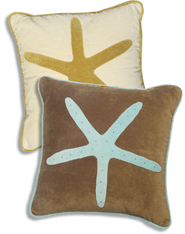 Bringing the outdoors in
Bringing the outdoors in
According to Fuston, sea glass is hot. “Our readers go crazy for it,” she says. Sea glass comes from discarded glass that—from the effects of wind, waves, sand and time—transforms itself into colorful jewels. Sea glass embodies an even bigger trend. Its colors—the pale blues and greens, reflective of the ocean and sky—are what homeowners are using for their main palettes, because they’re soothing, says Fuston. “They’re bringing the outdoors inside,” she says.
“In the coastal areas, we spend almost as much time outdoors as we do indoors, and the trend toward outdoor living areas has accentuated that,” Stadler says. “It is only natural, then, to bring more of the outdoor color and environment to our indoor environment.”
Let’s not forget another important color that brings the outside in: the color of sand. Add some natural fiber and you have the successful formula behind Chunky Loop, a top-selling rug manufactured by Classic Home Rugs in Bell, CA. Rugs made from natural fibers—like sisal, jute, coir and sea grass—now grace main living areas. “As casual lifestyle decorating schemes become more and more popular with a younger rug customer, natural fiber rugs are in demand across the country for accessorizing dens, bedrooms, sitting rooms, solariums—anywhere a feeling of relaxed elegance is desired,” says Wade Wolbert, sales director for Classic Home Rugs.
In addition to blues and greens, red tree coral is a hot color in the coastal market. “Coral has always been a staple of curio. It became a hot theme in the home decor world and it is now entering the gift market,” says Scott Kingsland, president of Fringe Studio in Culver City, CA, a home accessories company. Kingsland’s best-selling candle features coral illustrations from an antique bookplate.
Despite the popularity of tree coral, Kingsland predicts that shells-related decor will outsell coral in 2007. “Shells work into home decor strategies more easily because the color palette for shells is larger. Coral offers a design punch because of the intense red associated with coral, but there’s a whole category of customers that stay away from red,” Kingsland says.

Travel tales
Coastal decor is often relaxing because it evokes memories of vacations past, especially when the decor is a memento from a special place. What do you bring home when you go to Maine? Perhaps a buoy used to mark the spot where a fisherman set his lobster trap. This is exactly what Maine-ly Buoys, in Brewer, ME, manufactures. OK, these aren’t actual buoys that have marked traps, but they look that way. Maine-ly Buoys’ buoys are made of wood (a rarity today), hand-painted and branded with a license number. Buoys are also reincarnated as doorstops, lamps, key rings, birdhouses (very popular) and wind chimes. Better yet, for vacationers, buoys can also be customized.
“Maine has a mystique about it, and the buoys are part of that,” says Maine-ly Buoys owner Lee Kingsbury. These buoys sell even in places far from the state of Maine. Kingsbury sells to retailers in places like Missouri and South Dakota. His company also sells other coastal-related products. Another way to help customers bring home their travel experiences is through customized vintage tin signs from Dean Miller. Retailers can order a picture of a woody car and surfboard with “Newport Beach,” for example, emblazoned on top. This line has done so well at gift shops that owner Doug Smith is expanding it. Signs are also available in wood.
Whether customers are bringing home a memento or buying an item to grace a fireplace mantel; whether it’s for their vacation home or their primary residence; whether they live in the North or the South, there are coastal products to please everyone. Gift store retailers simply need to home in on their customers’ coastal preferences and create relaxing environments in their stores. This is a growing trend you don’t want to miss out on, so grab your board and dive in.



















